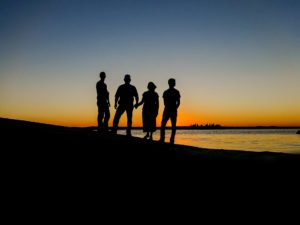Family Roles in Addiction

Oftentimes, when we talk about addiction, we discuss the addict themselves. Certainly, much of treatment program centers around substance abuse, mental health, and emotional and physical recovery of the addict, but there is another important element to observe and consider. The role of the family in the addict’s life is crucial. The family, good or bad, is part of the individual’s very core foundation. Family experiences and observations throughout life can condition and impact the mental and physical health of the addict, and ultimately influence recovery, relapse, and self-ideals.
In addiction, there are six distinct roles within the family. Either a spouse or child can take on these particular roles, thereby establishing patterns within the family to affect not only the addict, but those around them. These individual roles are often adopted, unknowingly, to make sense of a chaotic situation. Almost as a coping mechanism, these roles allow each individual family member to take the spotlight off the addict in an attempt to reduce stress within the home. These behaviors, however, actually do the opposite – intensifying anxiety, stress, and uncertainty. This fractured and false sense of family ultimately leads to resentment and irreparable damage to the family unit.
The first of these roles is, of course, The Addict. This is the center of the family in so much that the addict draws attention from everyone else, often having the rest live on pins and needles anticipating his or her next move, failure, relapse, or worst of all — death. The addict affects everyone around them by manipulating, hurting, and lying. They are aware of their role within the family, and often can see the destruction, however the addiction trumps all, destroying the trust, security, and sometimes safety of those in the household.
The second is referred to as The Enabler. This is the family fixer – the peacemaker. They often cover up what’s really going on and try to create a happy, peaceful home. It may seem as though they’re burying their head in the sand, but this role is actually more active and powerful than that. The enabler empowers the addict to continue their behavior by not challenging it, addressing it, and sometimes shockingly, helps the addict in convincing others no addiction exists. We can be led to believe that the enabler assumes this role to appease the addict, but in fact, the enabler often wants to prevent social embarrassment on personal failure by shielding the world from what is happening in the home.
The third is The Hero. The hero tries to create a life of normalcy in their own way, often by striving for perfection, and through their hard work and personal accomplishments tries to create the image that nothing is wrong. The hero is your typical A-type, often the oldest child, patching together a broken home through tremendous effort. In this false sense of perfection, the hero hopes to influence the addict with a show that all is okay. Heroes typically go full speed ahead trying to accomplish and conquer. All this in an effort to satisfy themselves and fill a tremendous emotional and family void. The hero often suffers from anxiety, and later in life, can see the manifestations of this lifelong role come to the surface as stress-related illness.






